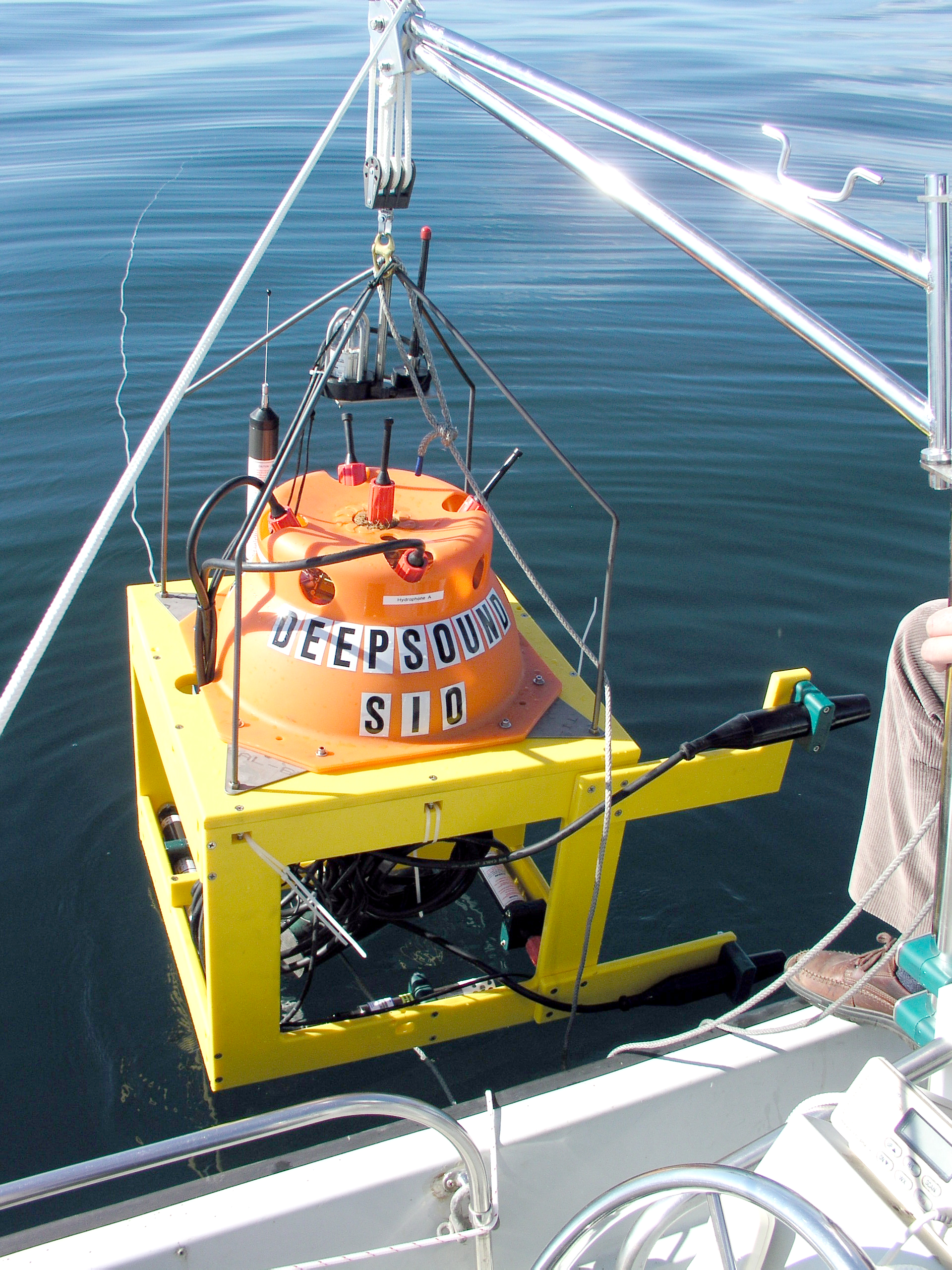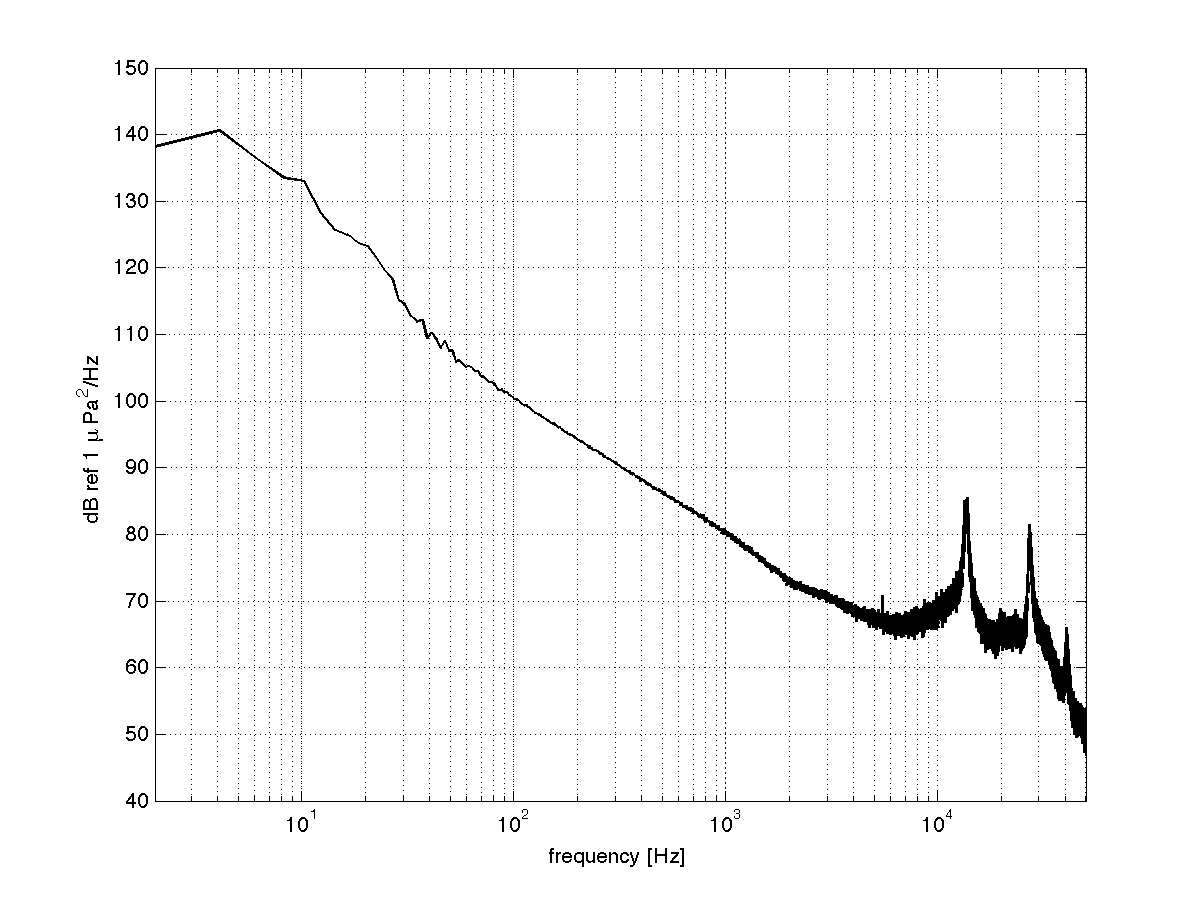
Deep Ocean Ambient
Noise in the Mariana Trench
David R. Barclay - dbarclay@mpl.ucsd.edu
Michael J. Buckingham - mbuckingham@ucsd.edu
Marine Physical Laboratory, Scripps Institution of Oceanography
University of California, San Diego
9500 Gilman Drive, La Jolla, CA 92093-0238, USA
Popular version of paper 2aAO2
Presented Tuesday morning, November 16, 2010
2nd Pan-American/Iberian Meeting on Acoustics, Cancun, Mexico
In 1951, during a survey of the Mariana Trench near Guam, the British Royal Navy ship HMS Challenger identified the deepest known point in the ocean, recording a depth of 10,911 meters (35,797 feet) at a position near 11˚ 22’ N 142˚ 36’ E. Known as the Challenger Deep, the sea bed at this location is as far beneath the sea surface as commercial jet aircraft fly above it. Few descents to the bottom of the Challenger Deep have been attempted, and only one manned submersible has ever reached the greatest depth, the bathyscaph Trieste on 23 January 1960 with Jacques Picard and US Navy Lieutenant (as he was then) Don Walsh on board.
Some fifty years on, it remains a fact that almost nothing is known about the greatest ocean depths, not least because of the enormous pressure that any exploratory vehicle must withstand in order to survive the deepest dives: every 10 meters down is equivalent to an increase in pressure of one atmosphere, which equates to approximately 1,100 atmospheres at the bottom of the Challenger Deep. By comparison, a space craft operates in a benign environment, having to contend with a pressure of just one atmosphere!
The ocean is an acoustically noisy environment, with sound created by wind-driven waves on the sea surface, by various seismic events including earthquakes and volcanoes, by marine mammals and other sea creatures, and by anthropogenic activities associated with shipping, along with offshore surveying and drilling for hydrocarbons. Although the characteristics of near-surface ambient noise have been fairly thoroughly investigated, comparatively little is known about the nature of the ambient sound field at greater depths, and especially at depths below 6,000 meters. To probe these extreme regions, we have developed Deep Sound, an untethered instrument platform with the capability of descending to (and returning from) the bottom of the oceans’ deepest trenches.

Figure 1. An early version of Deep Sound, photographed during an engineering test.
Deep Sound, illustrated in Fig.1, is designed to free-fall from the sea surface to a pre-assigned depth, at which point a burn wire releases a drop weight, allowing the system to return to the surface under buoyancy. The descent and ascent rates are the same at 0.6 m/s, corresponding to a round-trip travel time to the bottom of the Challenger Deep of just over 10 hours. A critically important component of Deep Sound is a Vitrovex glass sphere, comprised of two hemispheres, with an external diameter of 43.2 cm. The sphere houses a pack of lithium-ion batteries, of the type found in modern lap-top computers, and a suite of microprocessor-controlled electronics for data acquisition, data storage, power management and system control. Outside the sphere, several hydrophones (underwater microphones) are arranged in vertical and horizontal configurations, and a conductivity-temperature-depth (CTD) probe returns environmental data from which the speed of sound as a function of depth is computed. Motion sensors continuously monitor the pitch, roll and yaw of the system, allowing advection due to local current flow to be monitored.
All the data acquired during a deployment of Deep Sound are stored on-board in solid-state memory. It is therefore imperative that the drop weight releases, enabling the system to return safely to the surface with the data. A sequence of fail-safe mechanisms has been integrated into the system, designed to ensure that the burn wire is indeed triggered even though the pre-assigned depth may not have been reached. Recovery of the system is facilitated by three antennas: a radio beacon, an Argos (GPS) beacon and a xenon high-intensity strobe light. Once Deep Sound is back on board ship, the data are downloaded via a wireless link or through hard-wire connectors penetrating the sphere. Other penetrators allow the batteries to be recharged without separating the hemispheres.
Each of the hydrophones has a bandwidth of 30 kHz and is calibrated over a substantial depth range. The motion of the hydrophones through the water induces a local turbulent flow field, which in turn creates low-frequency (below a few hundred Hertz) interference in the acoustic recordings. To reduce the effects of this flow noise, each hydrophone is fitted with an open-pore-foam flow shield, which in effect keeps the turbulent pressure fluctuations away from the active surface of the sensor.

Figure 2. Depth versus time profile for one of the Deep Sound deployments in the Mariana Trench.
Deep Sound was successfully deployed twice in the Mariana Trench to a depth of 9000 m in November 2009. Fig. 2 shows the depth-versus-time profile and sound speed profile measured with Deep Sound’s CTD. An ambient noise spectrum taken at a depth of 8,413 meters at the same location is shown in Fig. 3. This noise spectrum is notable for its smoothness over much of the spectral range. By combining the outputs from two vertically aligned hydrophones, it is possible to obtain the vertical coherence of the noise, which provides a measure of the directionality of the noise in the vertical. Such information helps in understanding the effect of the sound speed profile on the spatial and temporal properties of the ambient noise field.

Figure 3. Ambient noise spectrum from a depth of 8,413 m in the Mariana Trench.
The ultimate challenge for Deep Sound is, of course, the Challenger Deep at the southern end of the Mariana Trench. To meet the demands of descending to such a great depth, a new version of Deep Sound has been developed with a depth rating of 11,000 meters. The instrument uses a Vitrovex sphere as an instrument housing along with smaller ceramic spheres for buoyancy. Increased hydrophone sensitivity and the addition of an inertial navigation system are among the main improvements of Deep Sound Mk III. We plan to deploy the new system to a depth of almost 11,000 meters, to the bottom of the Challenger Deep. If successful, it will return with continuous acoustic and environmental recordings taken from the surface to the bottom of the deepest known part of the Earth’s oceans. (Research supported by the Office of Naval Research)